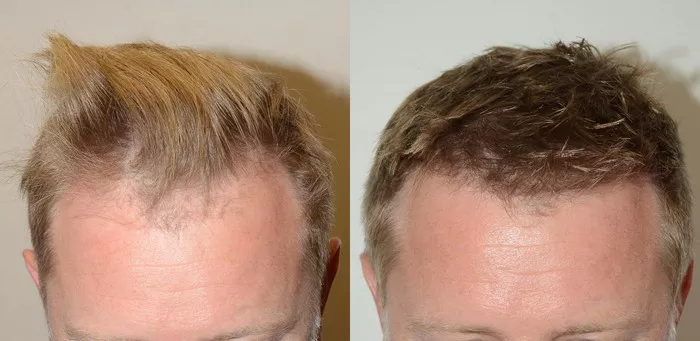Undergoing a hair transplant is a transformative experience, and proper aftercare plays a pivotal role in ensuring the success of the procedure. One common question that arises during the recovery process is, “Can I shower after a hair transplant?” In this comprehensive guide, we’ll explore the intricacies of post-transplant showering, providing insights into the do’s and don’ts to facilitate optimal healing and protect your newly transplanted hair follicles.
1. Immediate Post-Op Care: A Critical Phase
In the immediate aftermath of a hair transplant, the focus is on protecting the delicate grafts and ensuring they are securely anchored in their new location. While showering is not immediately permitted, your surgeon will provide specific instructions on when and how you can resume this essential hygiene routine.
2. Following Your Surgeon’s Guidelines: The Golden Rule
Your surgeon’s post-operative guidelines are your roadmap to a successful recovery. Each hair transplant procedure may have slight variations in aftercare instructions, and it’s crucial to adhere to the guidelines provided by your surgeon. These instructions are tailored to your specific case and take into account the intricacies of the transplant procedure.
3. The Initial Waiting Period: Patience is Key
In the initial days following a hair transplant, your surgeon may recommend avoiding showering to protect the grafts from any potential damage. The waiting period typically ranges from 24 to 48 hours post-surgery. During this time, your focus should be on gentle care, avoiding any direct contact with the transplanted area.
4. Gradual Resumption of Showering: A Step-by-Step Approach
Once the waiting period has passed, your surgeon will provide guidance on how to gradually reintroduce showering into your routine. This may involve using a handheld showerhead at a gentle pressure, avoiding direct contact with the transplanted grafts. It’s essential to use lukewarm water and mild, fragrance-free shampoos and cleansers during this phase.
5. Gentle Cleansing: Nurturing Your Scalp
As you resume showering, adopt a gentle cleansing approach. Use your fingertips to lightly cleanse your scalp, avoiding any rubbing or scrubbing. It’s crucial to be mindful of the transplanted area and treat it with utmost care to prevent dislodging grafts or causing unnecessary trauma to the scalp.
6. Patting, Not Rubbing: Towel Drying Techniques
After showering, how you dry your hair is equally important. Rather than vigorously rubbing your hair with a towel, opt for a patting motion to absorb excess water gently. The transplanted area should be treated with extra care to minimize any potential disruption to the grafts.
7. Avoiding Direct Water Pressure: Shielding the Grafts
During the initial post-transplant period, it’s advisable to avoid direct water pressure on the transplanted area. This can be achieved by using a handheld showerhead or adjusting the water flow to a gentle stream. Direct water pressure can dislodge grafts or create unnecessary stress on the healing scalp.
8. Protecting Against Infection: Maintaining a Sterile Environment
While showering is a vital aspect of hygiene, it’s crucial to maintain a sterile environment to prevent infections. Avoid exposing the transplanted area to potentially contaminated water sources, such as public pools or hot tubs, during the early stages of recovery. Following your surgeon’s recommendations on when it’s safe to resume such activities is essential.
9. Post-Shower Hair Care: Nurturing Your Follicles
After showering, consider your post-shower hair care routine. Your surgeon may recommend specific products or techniques to support the healing process and promote optimal graft integration. This may include applying prescribed solutions or avoiding certain styling products during the initial weeks post-transplant.
10. Communication with Your Surgeon: Open Dialogue for Optimal Care
Maintaining open communication with your surgeon is vital throughout the recovery process. If you have any concerns or questions regarding showering or other aspects of your aftercare routine, don’t hesitate to reach out to your surgical team. They are there to provide guidance and address any uncertainties to ensure your recovery progresses smoothly.
See Also: [Revealed!] Why is My Hair Transplant Patchy After 1 Year?
Conclusion: Nurturing Your Newly Transplanted Mane
In conclusion, the question of whether you can shower after a hair transplant is not a simple yes or no. It’s a nuanced process that involves following your surgeon’s specific guidelines, adhering to waiting periods, and adopting a gentle and cautious approach to hygiene. Showering, when done correctly, becomes an integral part of nurturing your newly transplanted mane and supporting the success of the procedure. Patience, adherence to instructions, and open communication with your surgical team are key elements in achieving the best possible outcomes during the post-transplant recovery journey.


